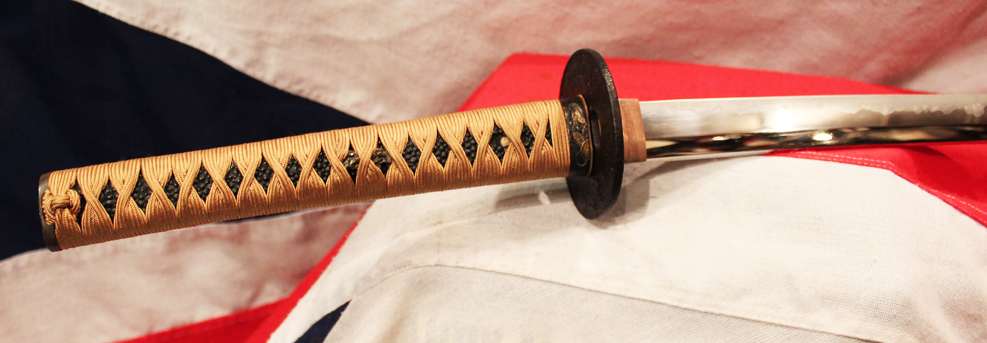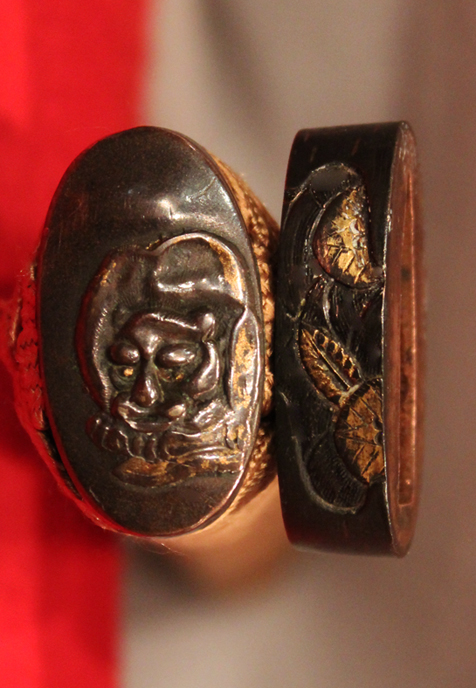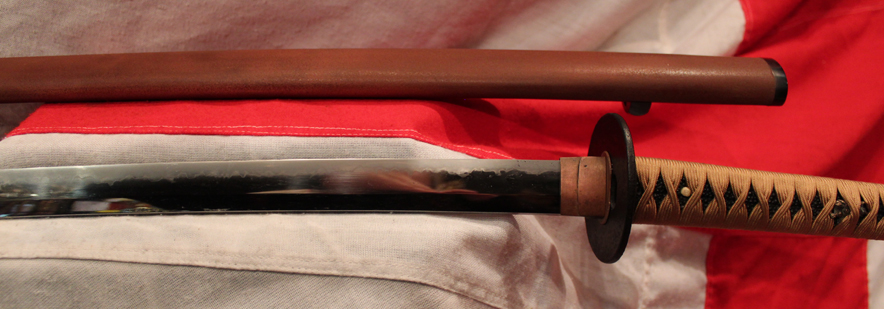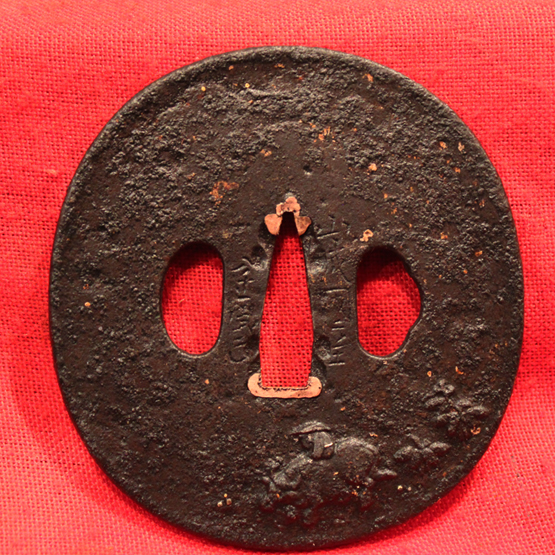A Stunning Ancient Koto Period Katana Circa 1400, Muromachi Era., Around 600 Years Old & Used From The The Warring States Period Sengoku jidai, From 1467 to 1567
Originally tachi or uchigatana mounted this fabulous and ancient sword was remounted likely 400 years ago as a katana. Signed tsuba decorated with a figure on a water buffalo and small pure gold inlaid dots. Gilt decorated fushi kashira, the fushi with depicting jungle fauna and the kashira with a takebori tiger. Gold silk bound tsuka over bronze shishi on black samegawa. Set off with a dark red stone finish lacquer saya. The blade has an incredibly beautiful and complex hamon pattern, with just a couple of thin, natural openings due to it's great age. The uchigatana was the predecessor to the katana as the battle-blade of feudal Japan's bushi (warrior class), and as it evolved into the later design, the two were often differentiated from each other only by how they were worn and by the fittings for the blades.
It was during the Mongol invasions that it was shown there were some weaknesses in the tachi sword which led to the development of the Katana.
The Warring States period (Sengoku jidai) lasted for the century from 1467 to 1567 although the wars and confusion of the age were not finally ended until the creation of the Tokugawa shogunate in 1603. The name is drawn from a similar period of civil war in China. It saw the breakdown of central authority, and an extended period of wars between hundreds of local, independent strongmen. The end saw the emergence of new methods of authority which were finally able to achieve a moderate degree of political centralization (there still remained 250 local rulers, the daimyo) and, to everyone’s relief and satisfaction, relative peace.
In later Japanese feudal history, during the Sengoku and Edo periods, certain high-ranking warriors daimyo of what became the ruling class would wear their swords tachi mounted This sword would very likely have been used in the Onin War (1467-1477) which led to serious political fragmentation and obliteration of domains: a great struggle for land and power ensued among bushi chieftains and lasted until the mid-sixteenth century. Peasants rose against their landlords and samurai against their overlords, as central control virtually disappeared. An early Japanese print in the gallery shows a samurai receiving his reward of a fine tachi such as this one from his shugo daimyo lord.
The shugo daimyo were the first group of men to hold the title "daimyo". They arose from among the shugo during the Muromachi period. The shugo daimyo held not only military and police powers, but also economic power within a province. They accumulated these powers throughout the first decades of the Muromachi period.
The Onin War was a major uprising in which shugo daimyo fought each other. During this and other wars of the time, kuni ikki, or provincial uprisings, took place as locally powerful warriors sought independence from the shugo daimyo. The deputies of the shugo daimyo, living in the provinces, seized the opportunity to strengthen their position. At the end of the fifteenth century, those shugo daimyo who succeeded remained in power. Those who had failed to exert control over their deputies fell from power and were replaced by a new class, the "sengoku daimyo", who arose from the ranks of the shugodai'K and Ji-samurai.
Every single item from The Lanes Armoury is accompanied by our unique Certificate of Authenticity. Part of our continued dedication to maintain the standards forged by us over the past 100 years of our family’s trading
28 inch blade length from tsuba to tip, 39 inches full length complete katana in saya, 9.65 inch Tsuka
Code: 19532
5750.00 GBP










